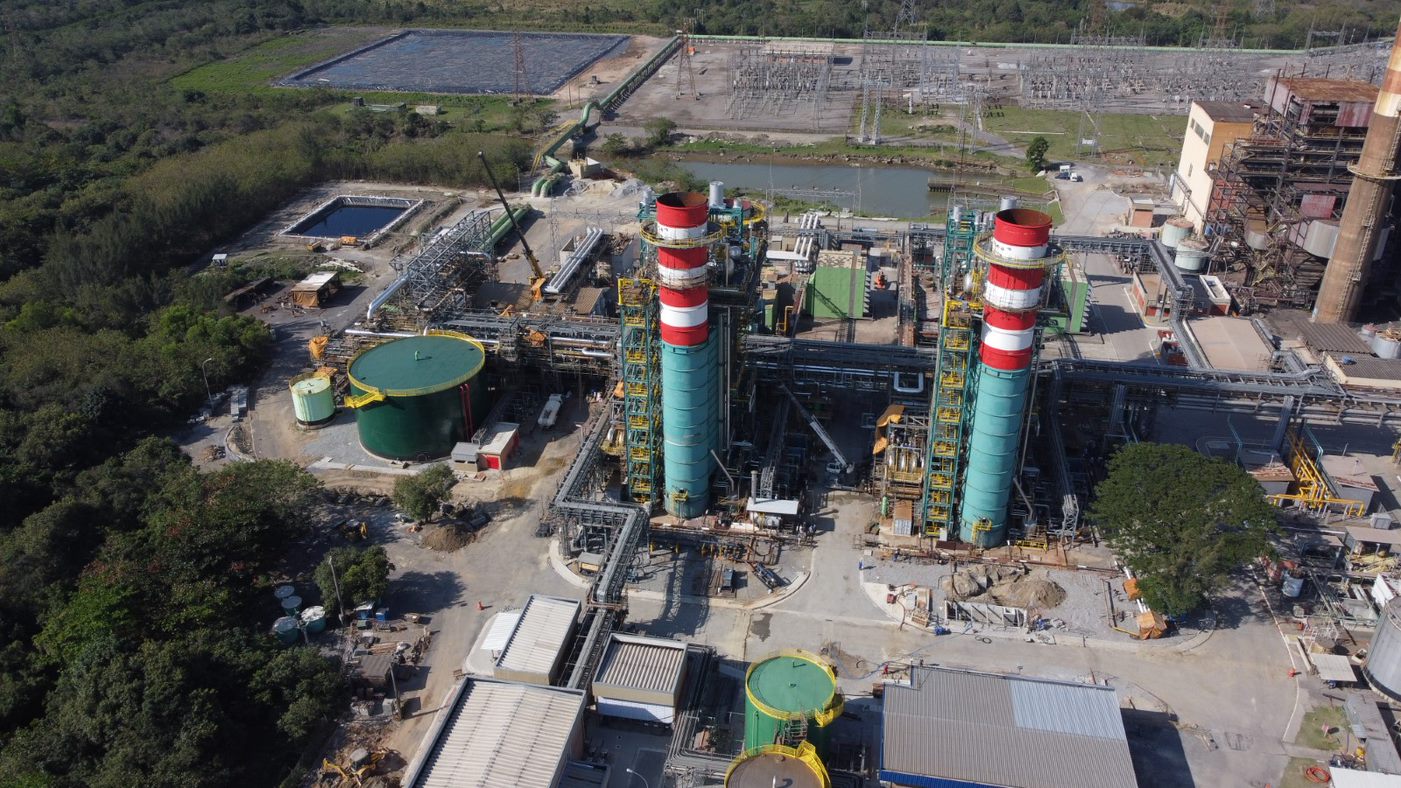As construction at the Gávea subway station advances to the stage involving the detonation of 60 meters of rock,...
OEC and Tenenge conclude tests and Santa Cruz TPP is ready to supply energy to the National Interconnected System
DATE: 02/14/2023

Modernization of the plant expands the power generation capacity, while improving its environmental performance
The construction companies OEC and Tenenge finalized all the tests required to start commercial operation of the combined cycle Santa Cruz Thermoelectric Plant, owned by Eletrobras Furnas, in the west zone of Rio de Janeiro, on January 22. With the completion of this test phase, Furnas can now apply to the National System Operator (ONS) and the National Electric Energy Agency (Aneel) for authorization to start operating and commercializing the new 150 MW of energy generated by the steam-powered Generating Unit.
With the modernization work, the new thermal generation plant now has two existing gas turbogenerators (Siemens Westinghouse W501F), two new recovery boilers with three pressure levels, and a new steam turbogenerator. With this new configuration, UTE Santa Cruz will increase its generation capacity by about one third, reaching a total of 500 MW, compared to 350 MW in the previous conception.
UTE Santa Cruz has always operated in open cycle, i.e., without using the heat from the exhaustion of the two natural gas turbines, each with a nominal capacity of 175 MW. In the previous operating model, the heat generated was discharged into the atmosphere through so-called by-pass chimneys. Thermal cycles with such a configuration have thermal efficiencies on the order of 25% to 35%. With the modernization carried out now, with the closing of the combined cycle, this heat is reused, directing the exhaustion gases from the two gas turbogenerators, which operate at high temperature, to two heat recovery boilers, where the transfer of thermal energy to the water circuit occurs, producing steam. This steam, superheated in the boilers, is fed to a steam turbogenerator, producing additional electrical energy.
The investment in the project made by Eletrobras Furnas has great relevance from an economic point of view, since more electricity is generated by burning the same amount of natural gas, representing greater thermal yield, and also has environmental importance, both for the greater use of the thermal energy of natural gas, and for the disposal of gases into the atmosphere at a lower temperature.
“This is a highly complex technical challenge, with no extra fuel consumption and no increase in carbon dioxide emissions. In addition, as proactive participants of the Sustainable Development Goals (SDGs) since 2015, we are committed to promoting an increasingly clean, renewable and affordable matrix. This way, we protect the environment and ensure quality of life,” comments Sidnei Bispo, Director of Engineering at Eletrobras Furnas.
According to Maria Alencar, OEC/Tenenge’s Contract Director, responsible for the implementation works of the plant’s combined cycle, the conclusion of this project is a reason
for great pride for everyone in the company. “We delivered a highly relevant project, which increases the country’s energy security, and which brought us a great legacy of learning due to the technologies applied. We are grateful to Eletrobras Furnas for the trust deposited in us,” he says.
The OEC has a vast portfolio of deliveries in this segment. It recently delivered the Punta Catalina Thermal Power Plant, in the Dominican Republic, with an installed capacity of 750 MW. In all, it has already executed 18 works in this modality, in Brazil and in several countries in Latin America, Africa, and the Middle East.


No comments